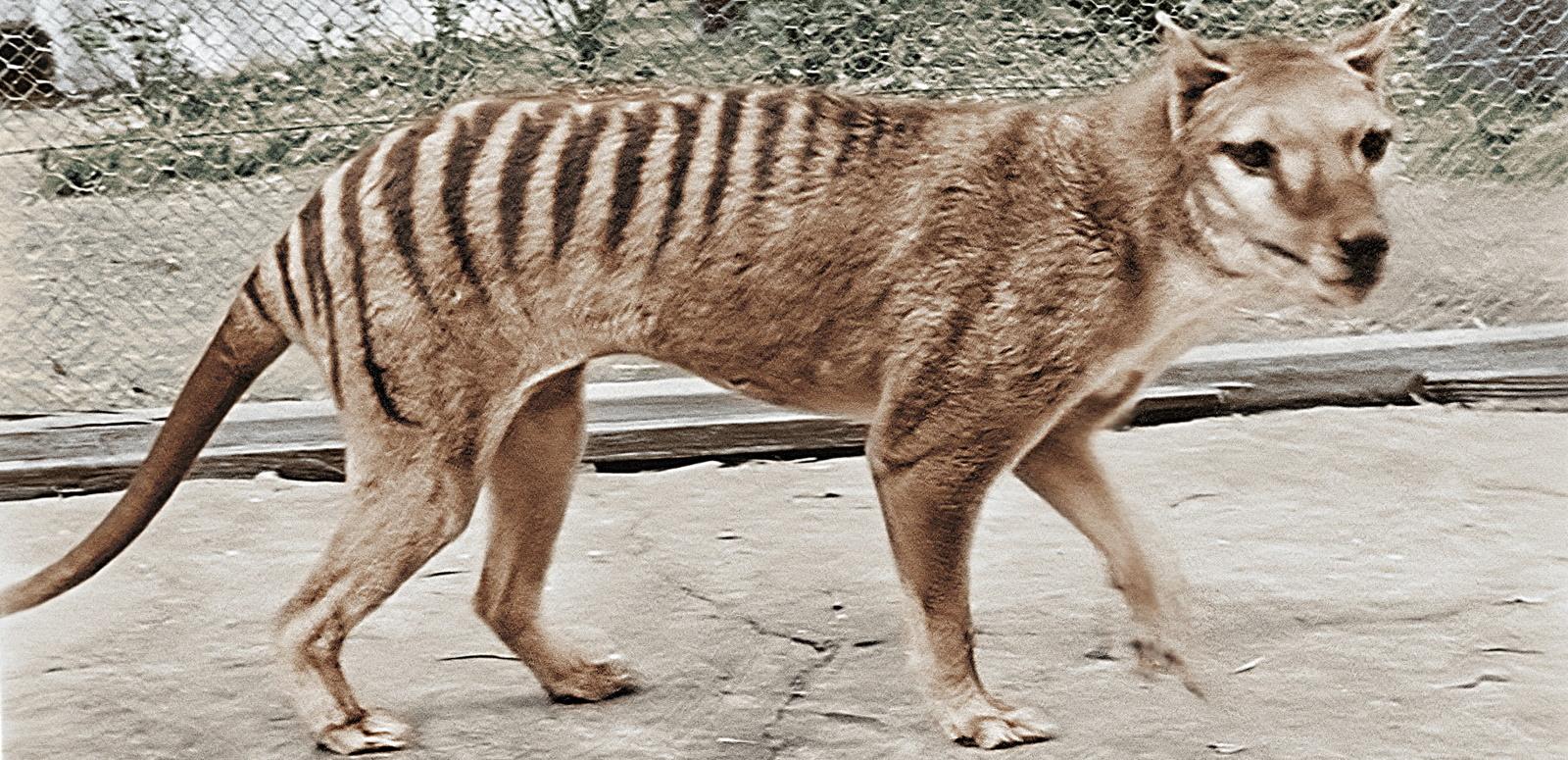
The Thylacine File
(formerly ‘Just Dying to Live’)
A 55 min Documentary Script produced/ script edited/ researched by Philippe Charluet and written/ researched by Edwin Hill
For hundreds of thousands of years a creature known to us as the thylacine roamed the Australian mainland, the island of Tasmania and the Aboriginal Dreamtime… The Thylacine (since known as the Tasmanian tiger) was unique and its characteristics were quite bizarre. It was a carnivorous marsupial that ran like a wolf, had a striped body, and a pouch like a kangaroo. When European settlers arrived in Australia two centuries ago the Thylacine existed solely on the island of Tasmania. In 1803, the settlers, mainly farmers worried about their sheep and cattle, began hunting him down with guns, poisons and traps, taking 140 years to eradicate him.Despite the Thylacine being officially extinct since 1936, 31 official expeditions and untold unofficial ones have taken place since. 70 years after the last known specimen died in a Hobart zoo, some of the descendants of these same settlers hope to find a Thylacine specimen not only in Tasmania but on the mainland of Australia where sightings are multiplying at an extraordinary rates around Gippsland and The Grampians in the State of Victoria.

While it is easy to be skeptical, many of the people with recent sightings are reliable and backed up by other same-area-on-the-same-day sightings or newspaper reports. Understandably, post-sighting they are “possessed” by the idea of wanting to catch, or at least photograph or videotape the beast so that they can prove that they really did see it. It did happen! He’s still out there! Their stories, eccentricities and quests are the main part of this timely documentary.
Until today the idea of being able to resurrect an extinct species was in the realms of science fiction; after four years of research, scientists at the Australian Museum have found that male and female tiger pups preserved since 1866 still contained undamaged DNA.
“We are crossing thresholds that many people told us would be impossible to cross,” said Professor Mike Archer of the Australian Museum. “The supposedly dead DNA we have recovered is in fact reacting in the same way that live DNA would. We had no right to expect that would be.”
“Humans caused the extinction,” explained geneticist Karen Firestone. “If we can put right a wrong, that’s fabulous, it’s a wonderful thing to try.”

The scientists’ argument is a that we all have a “moral obligation” to see that this happens… Alongside this moral obligation (and the moral issues surrounding cloning from the dead) lies Man’s morbid fascination with creation itself, making this scientific challenge an inevitability. Not since Dr Frankenstein first fired up his conductors has the air been so electric with anticipation… yet, some hard questions have to be asked.
The Thylacine File is a timely ecological fable in which man’s darker nature is stripped bare as he is seen ‘playing God’ on the land and in the lab. The Tasmanian tiger’s story shows us where man’s primeval fears and his irrepressible need to ‘fiddle’ with nature can lead.
Developed with the assistance of Film Victoria.
Video Tab above: Footage of the last Tasmanian Tiger (thylacine) in Beaumaris Zoo, Hobart, 1933. Footage colourised by Composite Films, 2021. Please note: this clip is silent.
Article (August 2022) Research Paper




